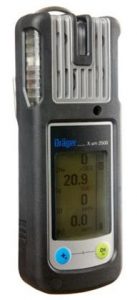
To see if a gas detector works a “Bump Test” is performed, this means applying the correct gas to the sensor to check operation integrity, by viewing the gas reading on the monitor in real-time.
As a guide, OSHA recommends a daily bump test before carrying out work in the field by following the manufacturer’s instructions. A bump test is purely an operational test and does not check the accuracy, a calibration does.
“Calibration” compares the gas concentration readings displayed on a device against a known accuracy standard. Are the readings the same or out in comparison to the standard? If out, the gas monitor will need to be calibrated or recalibrated. This means resetting the detector’s response against a known concentration of target gas. Calibration gas cylinders are supplied in sizes from 34 to 116 litres in a balance of air or nitrogen. The detector sensors are exposed to the gas, allowing the device to automatically adjust the readings to coincide with the known concentration of calibration gas. Or the operator will manually adjust the readings to match.
Calibration intervals vary dependent on sensors, expired time and usage. For the gas detector pictured (standard four gas monitor LEL, CO, H2S, O2), the recommended calibration period is every six months. A gas detector should be calibrated at least once annually.
We supply calibration gas, automatic calibration stations, regulators and tubing.
